1lumen selects and reviews products personally. We may earn affiliate commissions through our links, which help support our testing.
Astrolux FT02S review
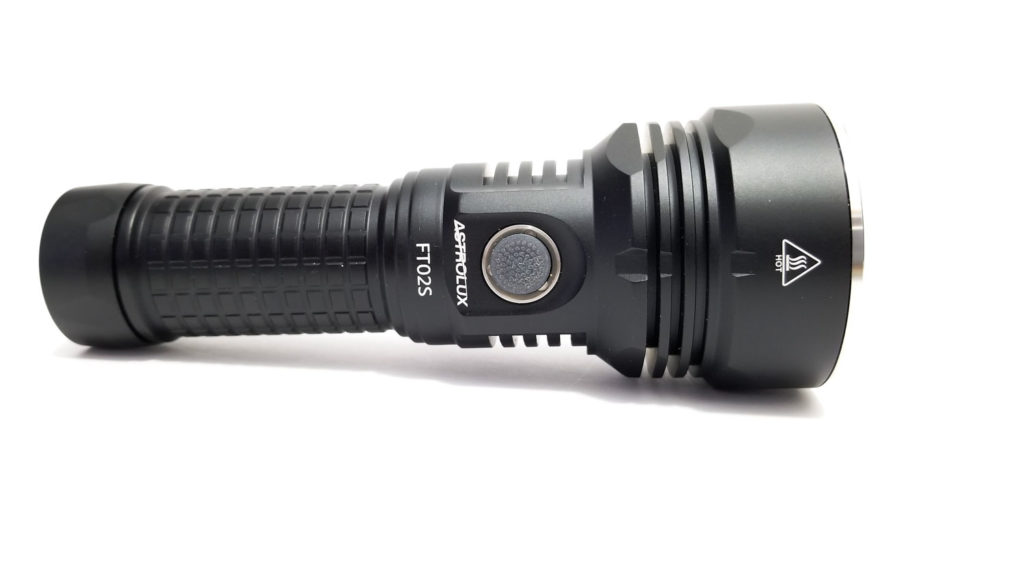
Astrolux FT02S specifications
| Brand/model | Astrolux FT02S |
|---|---|
| LED | 4 Cree XHP50.2 3 volt 5700K |
| Lumens | 11,000 lm |
| Beam intensity | 76,400 cd |
| Battery config. | 1*26650 |
| Material | Aluminum |
| Modes | Many runs Anduril UI |
| Blinkies | Many |
| Reflector | Smooth |
| Waterproof | IPX8 |
| Review date | February 2021 |
Introduction:
Astrolux is a name I hear quite a lot on the flashlight forums, and anyone who has been in this hobby for a while probably owns one or more Astrolux lights. For those who don’t know, Astrolux is not a manufacturer, but is Banggood’s store brand. The lights are manufactured by various flashlight OEMs including Mateminco, Thorfire, Sofirn, and more recently Jetbeam. Since its debut, the brand has accumulated quite a full stable of lights: EDC’s, throwers, LEP’s, you name it, and one thing I like about Astrolux is that they listen to consumers and make improvements to existing products, or release new ones.
Case in point, the FT02S. This is an upgraded version of the FT02, which is a medium thrower. The first version had a single Cree XHP35 HI, but the new ‘S’ is a completely different animal. The XHP35 is gone, replaced by 4 high power emitters in a deep quad SMO reflector. Four emitters are better than one so it should be good, right? Let’s see.
Package quality.
Okay, I’m partial to a nice-looking package, but the Astrolux FT02S came in a cheap cardboard box that’s pretty boring. Inside the box the flashlight was sitting in foam cut to shape. There’s a simple user manual, and a small baggie containing spare o-rings and a pretty nice lanyard. No battery was included, which isn’t a deal-breaker since most enthusiasts will supply their own anyway.
What You’ll Get:
- The Astrolux FT02S
- 3 spare o-rings
- Lanyard
- Manual
- Battery adapter tubes
This is a pretty complete kit, but one thing that’s missing is a USB cable. I get that most of us have a USB A to C cable lying around, but to not include a cheap cable in a moderately expensive light is a party foul.
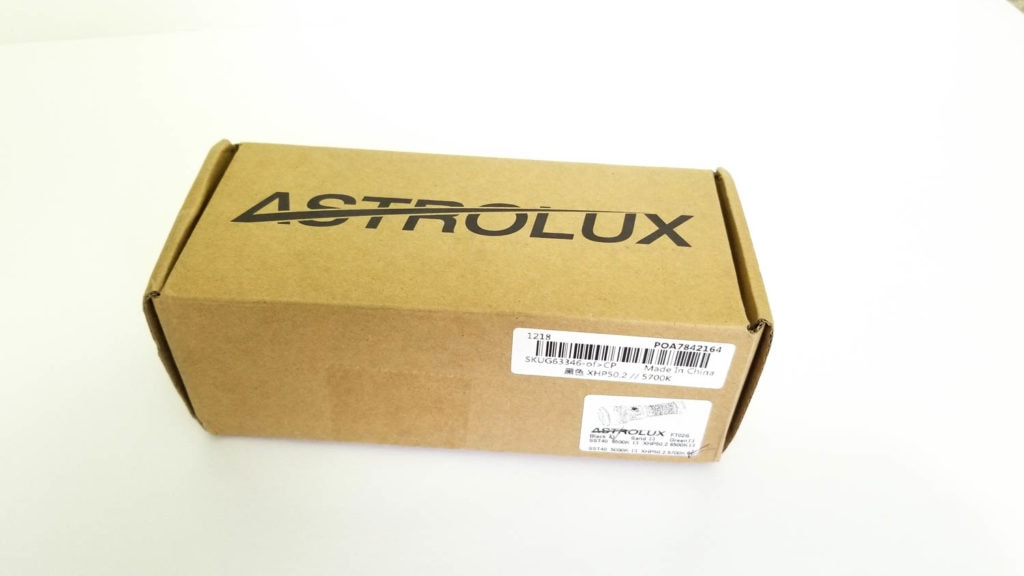
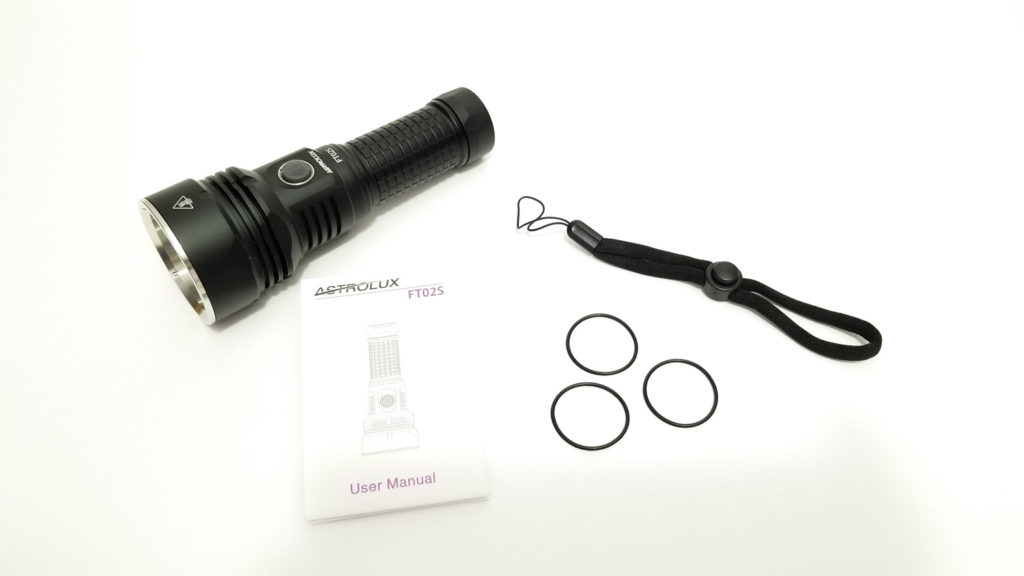
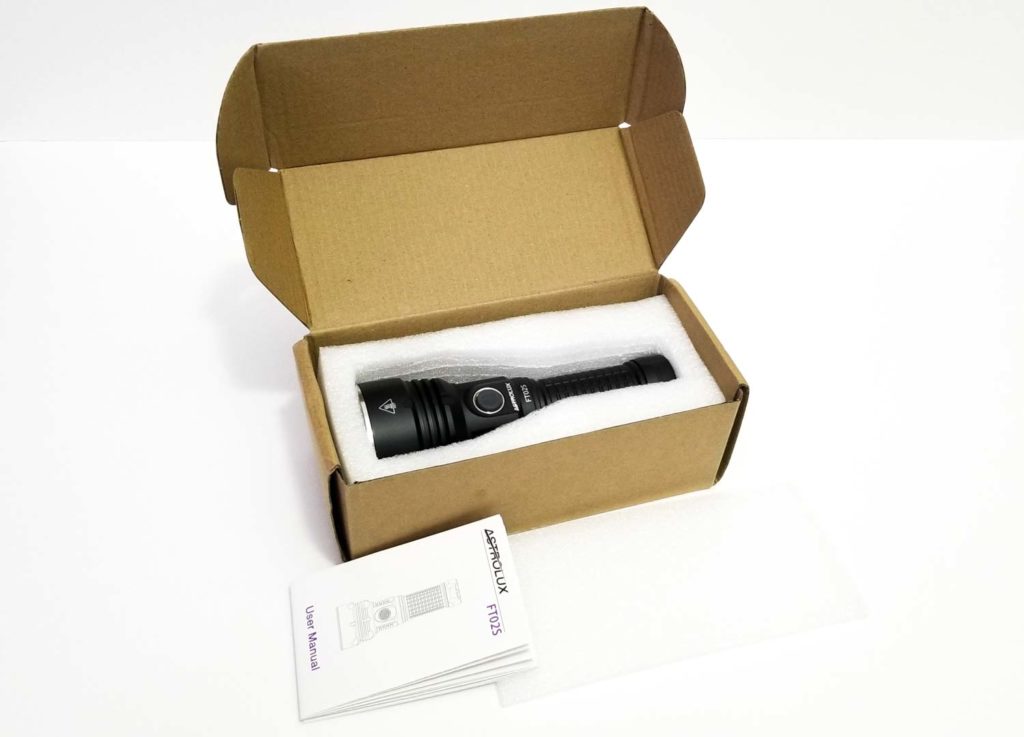
Handling of the light
The light feels really nice in the hand. The overall size is slightly larger than a C8, and about the same size as my Acebeam L18. The knobbly texture and diameter of the battery tube makes it nice to hold. Despite being a high power light, it’s not too heavy and would easily ride in a deep jacket pocket. I had no trouble reaching the front-mounted electronic side switch, either. The switch is pretty snappy and takes good force to press, which is good since you don’t want this coming on by accident. The switch is lighted to show battery state (at last, blue LED’s for the switch, but green and red for charging status), and the rubber button protrudes just enough to be able to find by feel.
The flat tailcap allows it to tail stand no problem and does have a lanyard hole, but it’s on the small side and it was an eternal struggle to get the lanyard threaded in (I gave up). You could hog the hole out with a reamer or fine file to get it to fit more easily..
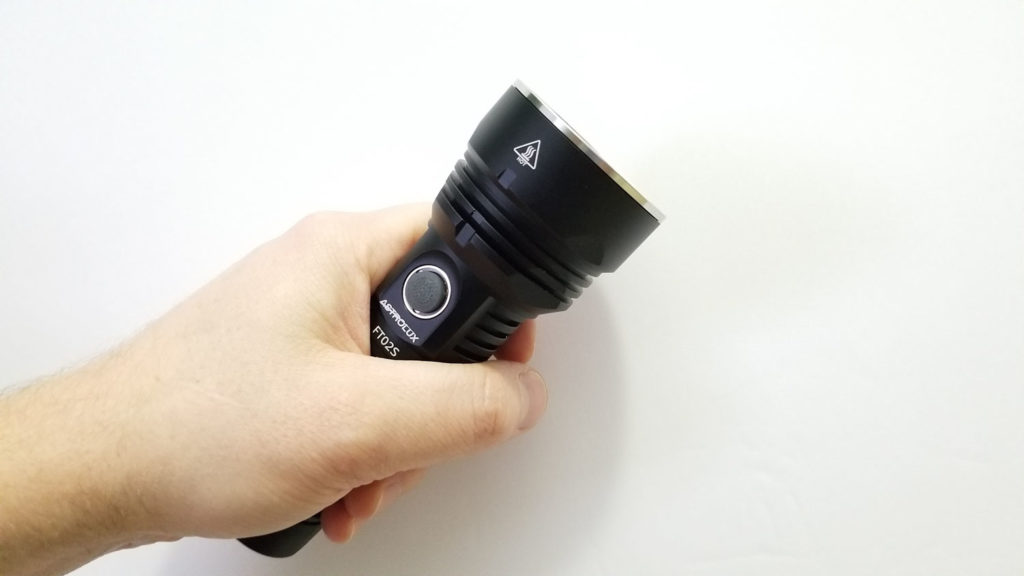
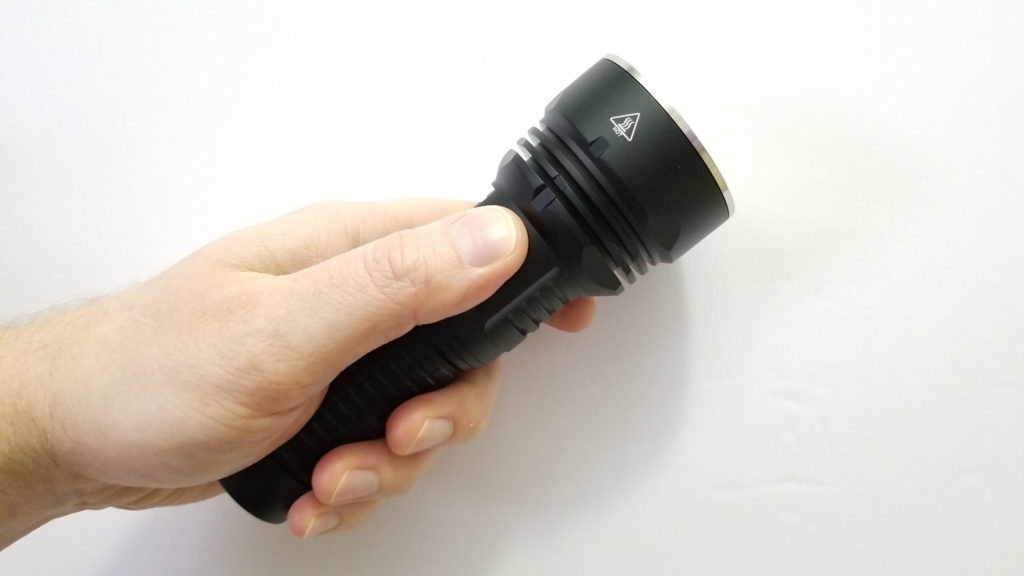
Build Quality, and Warranty
If you think the Astrolux FT02S looks a lot like the Mateminco TK04, you’re not seeing things because the FT02S is a TK04 with slight design changes for Astrolux. The build quality is perfectly adequate at this price point, and the machining is serviceable with no defects, obvious tool marks or sharp edges, and all the parts fit together just fine. The anodizing is type III HA, which is a nice matte finish. There’s no knurling, but the battery tube has the aforementioned square pattern cut into it for gripping, which is really effective.
The head design looks similar to other Mateminco lights, and adds extra cooling fins above the switch. I really like this design, and the accent ring around the switch is nice also. The tailcap does add some anti-roll protection, but not much.
The battery tube has rear triangular cut threads that are fully anodized and a little short and finer than I’m used to. The upper threads are the same, but even shorter and were not anodized. Everything screwed together smoothly, but it seemed like the threads were either not lubed or had very little, so I added some SuperLube and that helped.
Everything is o-ring sealed, and Astrolux claims IPX8 rating. I don’t know how believable that is though, but the charge port seems well sealed with a silicone rubber plug. The tailcap has a dual spring setup which is good since it pulls over 30 amps, and the driver has a brass button for positive contact. The spring is really long and under a lot of tension (we’ll see why later), and even with flat top 27100’s I had the tailcap pop off and go flying out of my hands when unscrewing it one time, so hang on to it.
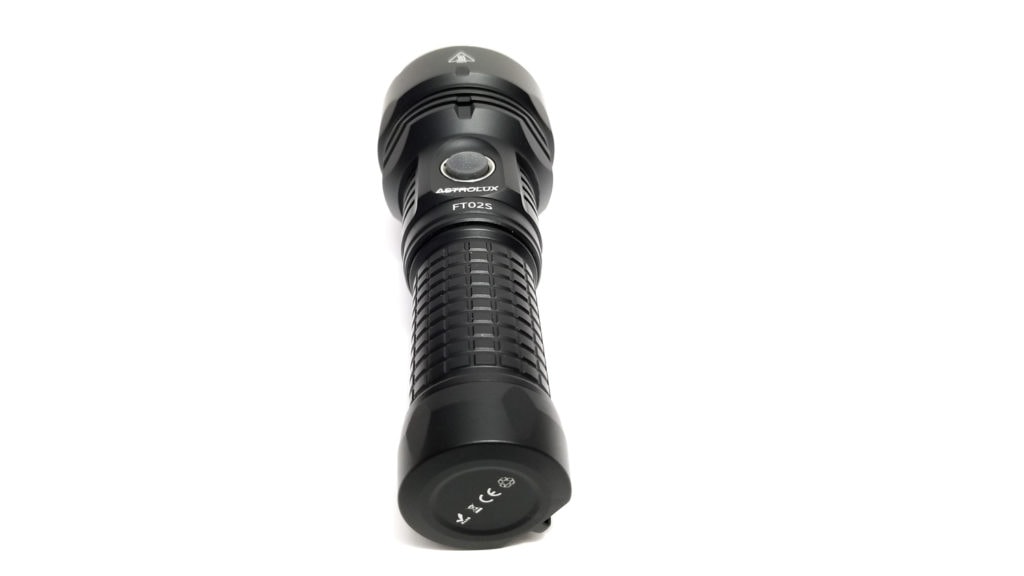
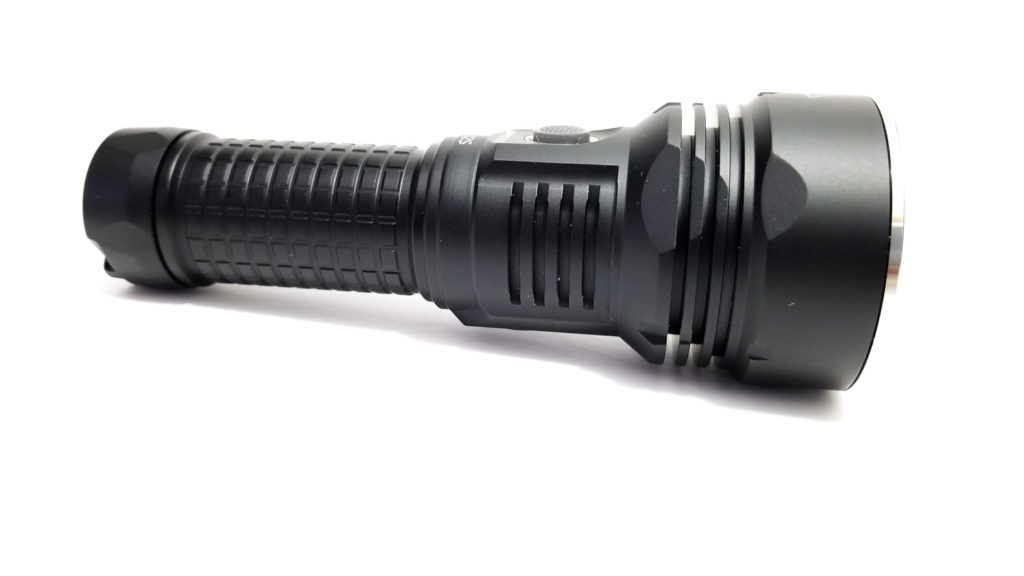
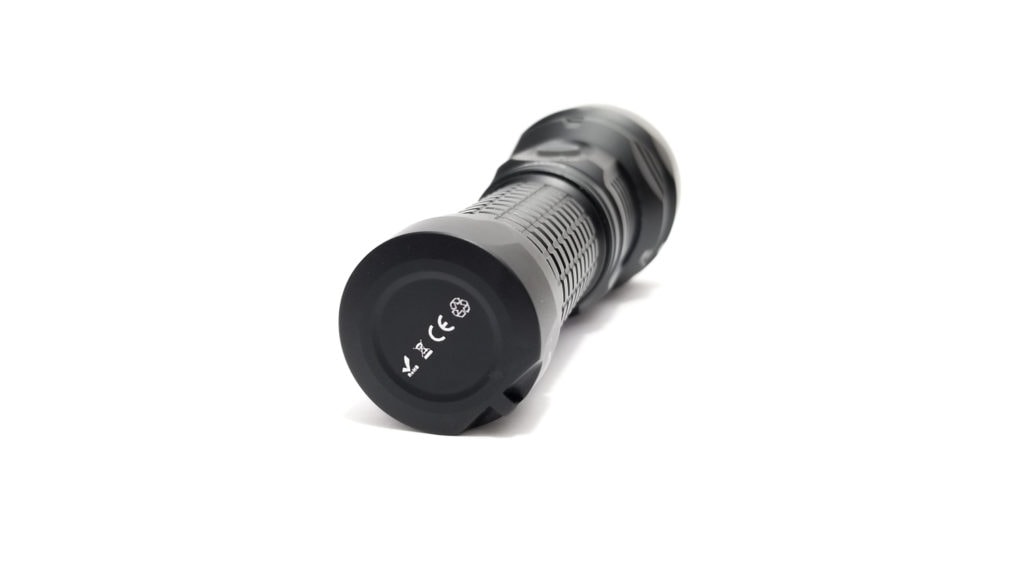
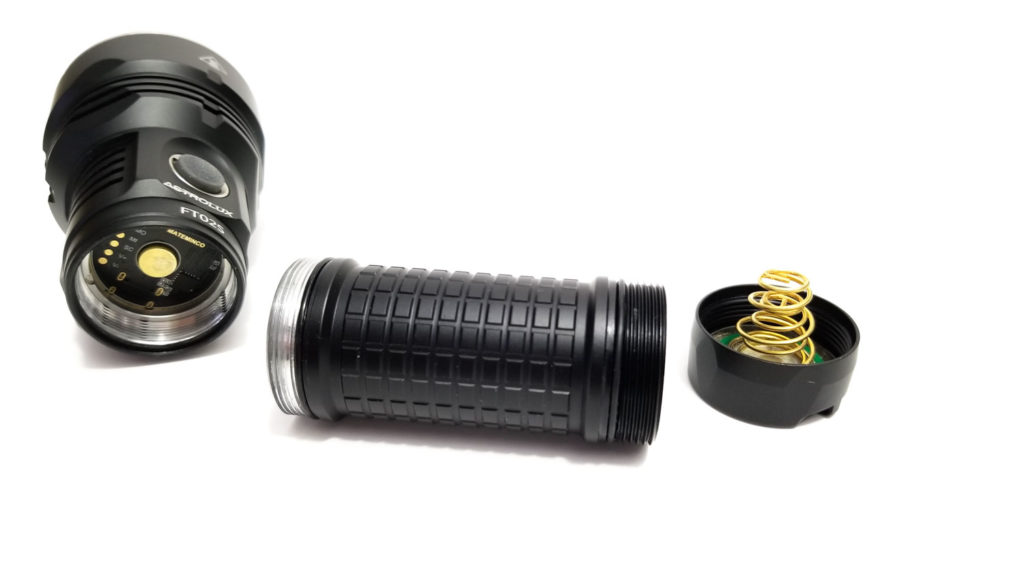
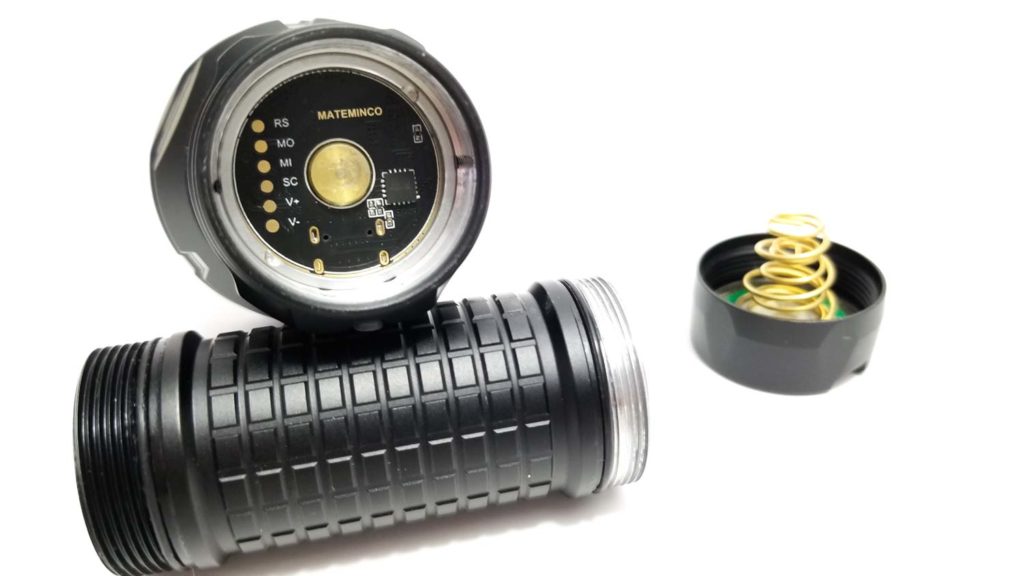
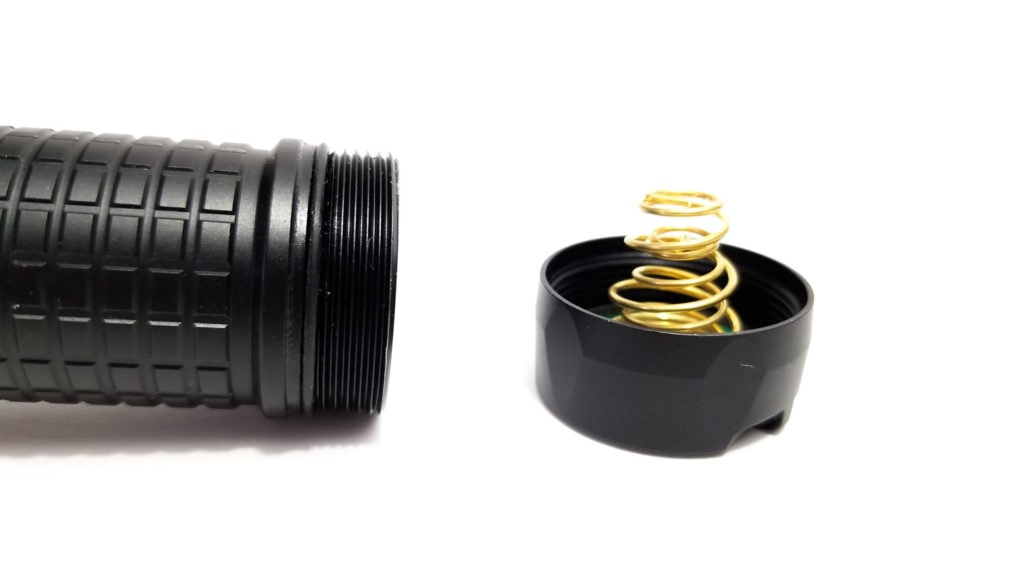
LED, Lens, Bezel, and Reflector
The biggest upgrade for the Astrolux FT02S is the LED. The original single XHP35 HI has been replaced with 4 Luminus SST40 or Cree XHP50.2 3 volt emitters. The SST40 comes in either 6500k or 5000k, and the 50.2 comes in 6500-7000k or 5700k. The test light came with the 5700k Cree LEDs. Although the SST40 will give more throw, the 50.2 gives much higher output.
The quad SMO reflector cups are deep and pretty close together, protected by a toughened mineral glass lens with a nice AR coating that isn’t obtrusive. The stainless steel bezel is nicely machined and should do a good job protecting the lens from drops.
The beam? Well, it’s interesting. You mostly get flood with some throw. There is a large hotspot and it’s about what I expect from a quad emitter reflector setup and lends good throw also. However, the reflector design means you also get an artifact-ridden spill with bright rings and shadowy areas in addition to the obligatory yellow-blue tint shift. To be fair, the latter is expected with the Cree emitters, and the artifacts are really only annoying when white wall hunting. Outdoors, it’s barely noticeable and the beam is actually pretty effective as a flood/medium throw design.
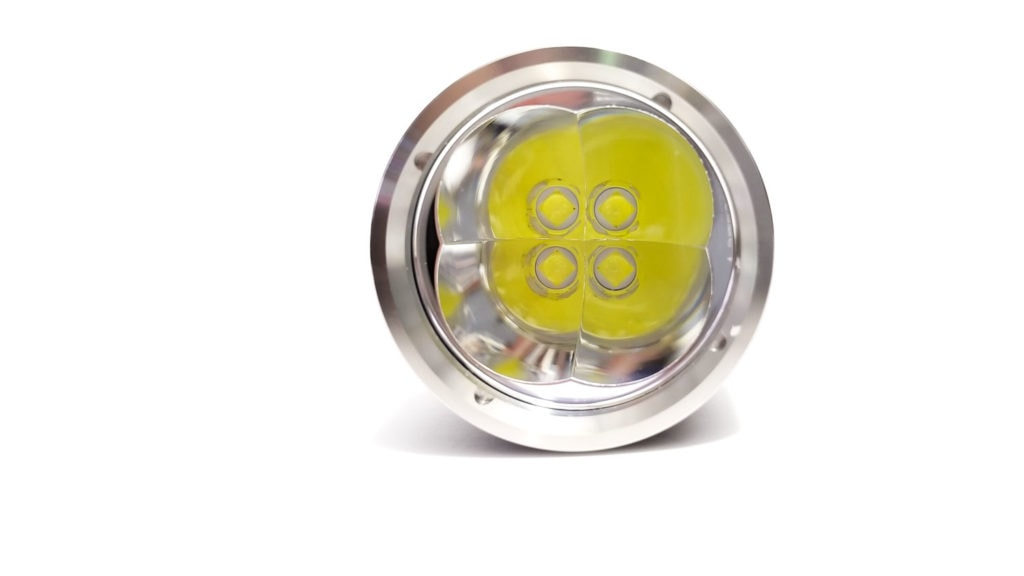
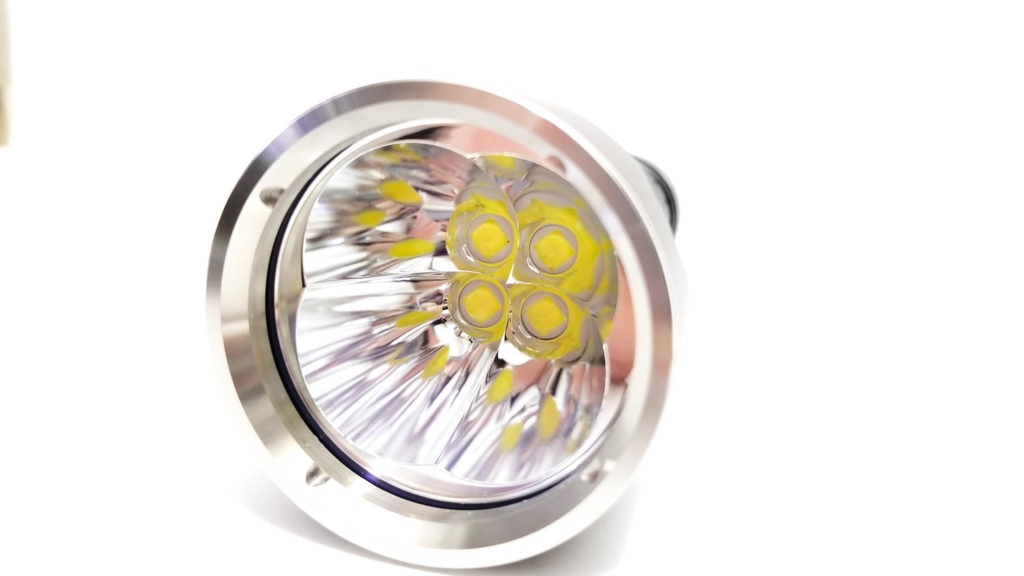
Dimensions
- Length: 147.4 mm / 5.80 inch
- Head diameter: 54.5 mm / 2.14 inch
- Body diameter: 34 mm / 1.33 inch
Weight:
- Without battery: 275 gr / 9.7 oz
- with Samsung 30T 324.2 gr / 11.43 oz
Popular flashlights size Comparison
Left to right group 1: Astrolux FT02S, Astrolux EC03, Sky Ray King.
Group 2: Astrolux FT02S, Thorfire C8, Skilhunt E2A.
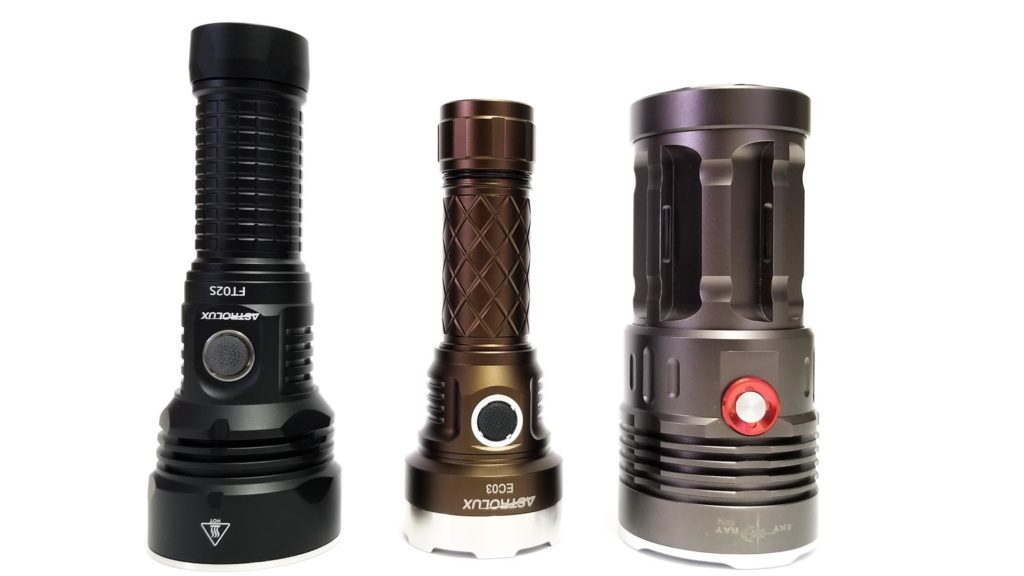
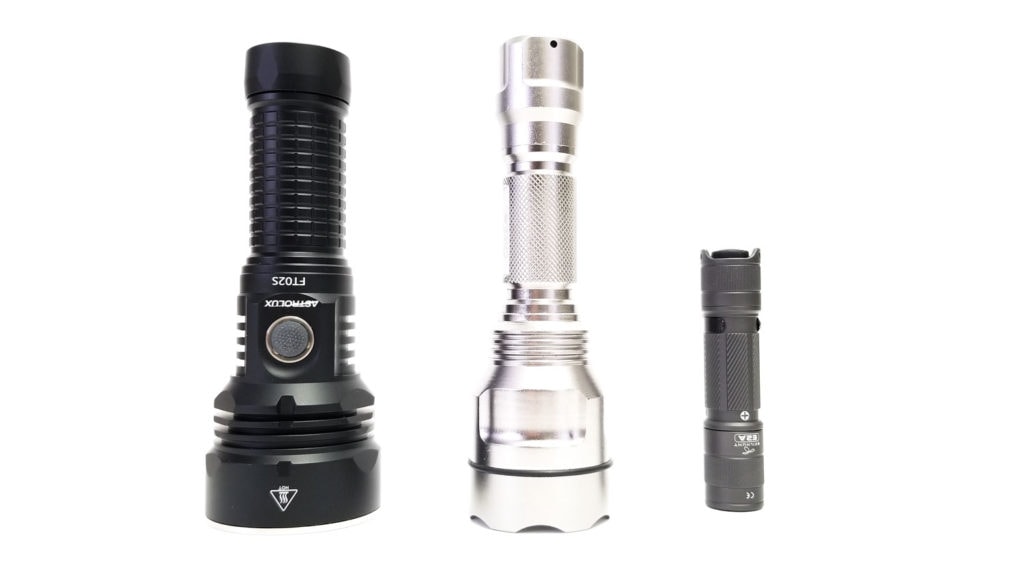
Driver & User Interface:
The FT02S comes loaded with ToyKeeper’s Andruil UI. It’s a pretty popular UI these days and finds its way into a lot of flashlights. The driver is an FET+1 design, with regulated lower modes and an FET for turbo and higher modes controlled by PWM. The backside of the diver has exposed flashing pads for updating the UI for those who wish to do so.
By default, the UI is set to smooth ramping with instant access to turbo, but you can also opt for stepped ramping with the number of steps and discrete brightness levels being configurable. Other options include a momentary mode for emulating forward clicky action, and a “muggle” mode, which runs the light at a lower output. You also get the mandatory electronic lockout, temperature check, and battery check.
From OFF:
- Single-click: ON
- Double click: Top of the ramp. Double click again for turbo
- Triple click: Access the utility modes
From ON:
- Press and Hold: changing brightness in either smooth or stepped ramping
- Single click: Low/Eco. Click again to change to next mode
- Double click: Turbo
- Triple click: Strobe
- 4 clicks: N/A
Mode memory:
- Yes, last mode memory
Low voltage warning:
- Yes. By default, Anduril will start decreasing output as the battery drains until it reaches 2.8 volts and turns off the light. The switch aux LEDs will also change color to indicate battery state as well.
Strobe/blinkies
- Many available!
Lock-out mode:
- Yes
PWM
- There is PWM in all but the lowest modes, but it’s fast PWM and I can only see it with my cell phone camera.
Additional info: Anduril is a very advanced UI, and can be as easy to use or as complicated as you want it to be. I think a novice could easily learn how to use it quickly. Please check the thermal configuration out of the box, since it might be off and this impacts how fast the light throttles back. Use a thermometer to check the ambient temperature and enter the temp check mode. The light will blink a series of blinks that tells you what temperature it thinks it is. If it’s way off from the thermometer, go to the configuration mode (4 more clicks) and set the ambient temperature along with the maximum step down temperature.
Batteries & Charging
The FT02S is pretty versatile when it comes to battery choices. The tube takes 26650 size batteries, but the light will also take 21700, 20700, and 18650 cells. The included adapter tubes allow for 21 mm diameter batteries and another that fits inside the upper half for 18 mm wide cells. The main adapter has an o-ring to add friction against the battery tube to prevent rattling. It was not lubricated and stuck inside the tube so you had to take the battery tube completely off to get it out. I added some SuperLube and that made it easier to remove. You will get the highest output on a 21700, and the longest runtime on 26650. I tried a 78 mm long protected Acebeam 21700 and I couldn’t screw the tailcap on, so be aware that 77 mm or longer cells may not fit, but most users probably won’t be using protected cells since there’s no way to use the highest modes without tripping protection circuits.
The light includes on board USB type C charging, so you don’t need a separate charger. However, you DO need a USB type A to C cable since one isn’t included.
The switch button turns red when charging, and goes green when charged. The battery was charged to 4.15 volts vs. 4.18 volts in my charger. Something to keep in mind is the onboard charger won’t charge the battery at full power if it’s over 4.18 volts so if you want the max capacity out of the cell, use an external charger.
Astrolux specifies a max 2 amp charge current. I tested that with my USB tester using a 2.4 amp wall charger and got around 1.7 amps/8.4 watts on a partly discharged Samsung 30T. That was with a cheap USB C cable, so take that with a grain of salt. A quality cable will give better numbers. The light will turn on when plugged in without having a battery in the tube, but only at a lower brightness.
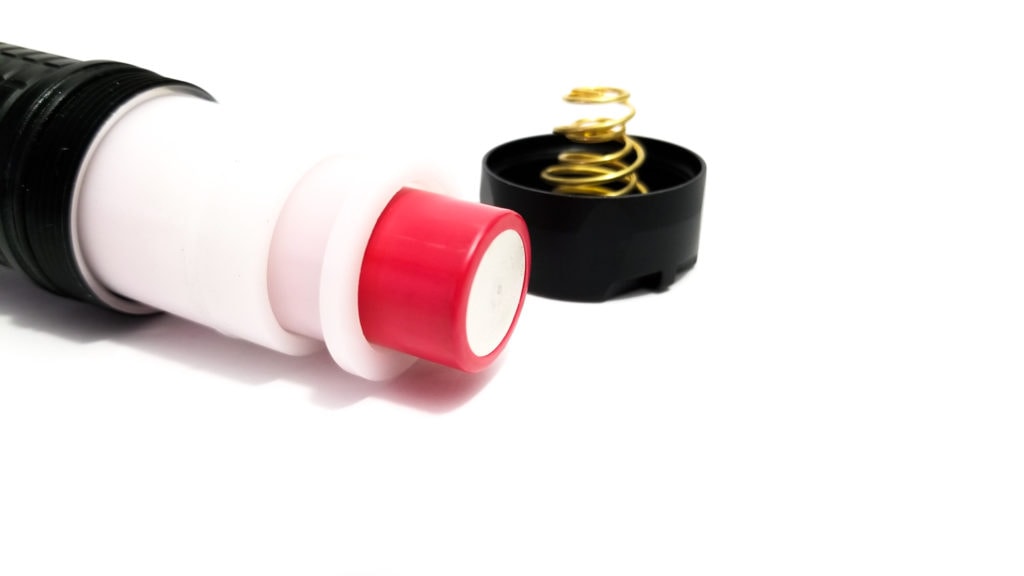
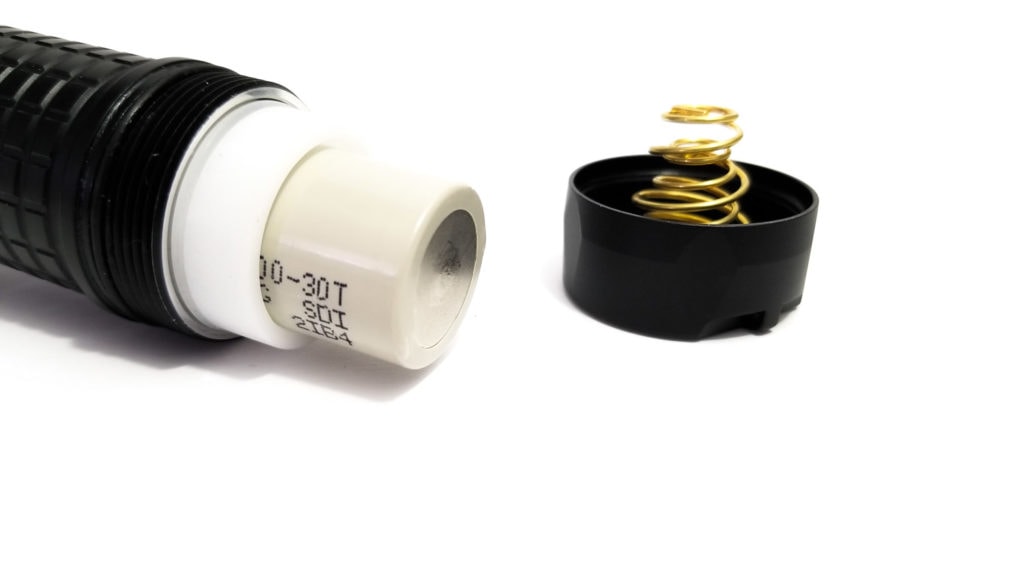
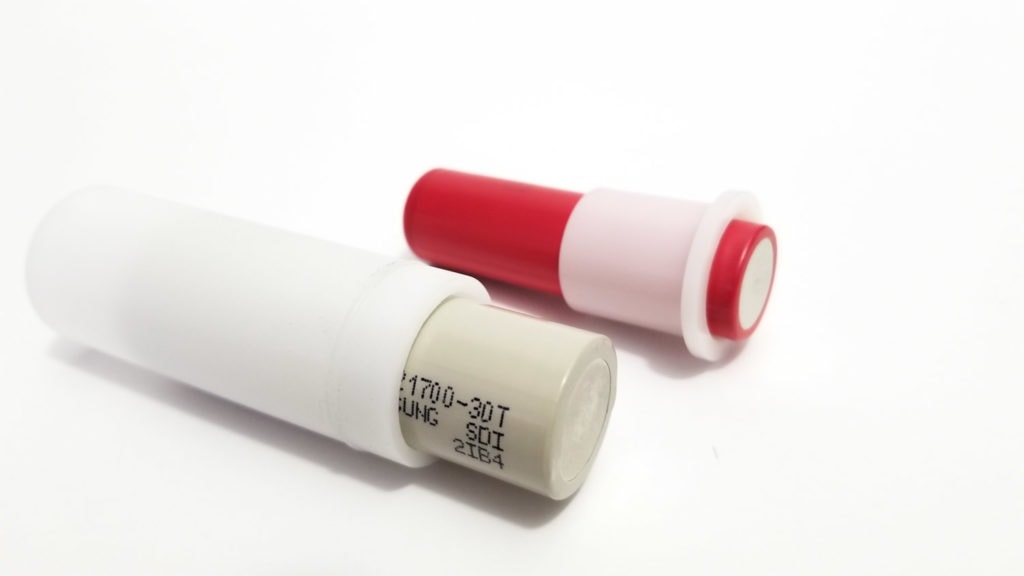
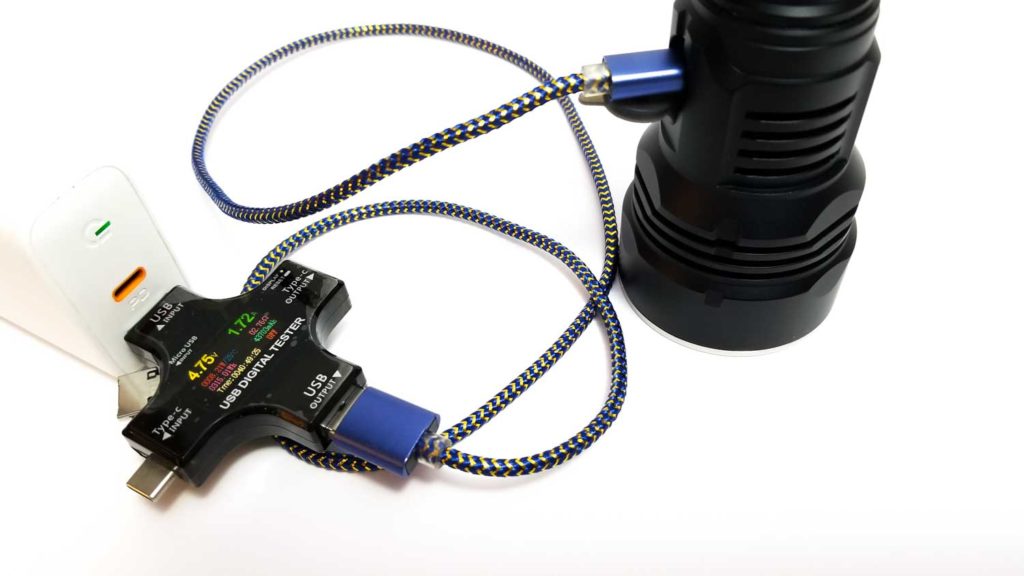
Performance
Okay, here’s where the rubber meets the road, and why people buy lights like these: Lots of lumens. Four emitters with low forward voltage behind an FET driver will draw lots of current and produce a lot of light (and heat).
Amp measurement
For the current measurement, I used my Radio Shack T-RMS multimeter with short 16 gauge wires inserted directly into the meter for lower modes and my clamp meter for the higher modes over 8 amps. Since this is an e-switch light, there is parasitic drain, measured at 0.13 mA.
I used the fully charged Samsung 30T 21700 for the current test using the stepped modes. Between level 1-3 the light is using the 7135 regulator on the driver, so you will get fantastically long run times.
- 1: 22 mA
- 2: 0.12 A
- 3: 0.28 A
- 4: 0.77 A
- 5: 3.04 A
- 6: 7.2 A
- 7: 15.6 A
- Turbo: 35.4 A at 0 sec. 32.1 A at 30 sec
Runtime graph
For the runtime tests, I used the 30 cm integrating sphere calibrated with a light of known output and the Digi-Sense 20250-00 data logging luxmeter. Temperatures were measured with my Ames non-contact thermometer. I used a Molicel P42A 4200 mAh 21700 and tested stepped modes 4, 5, 6, 7, and turbo. I set the thermal configuration to max (70 C) for the step down, and calibrated for room temperature. I didn’t test the lower 3 levels since they would run for days.
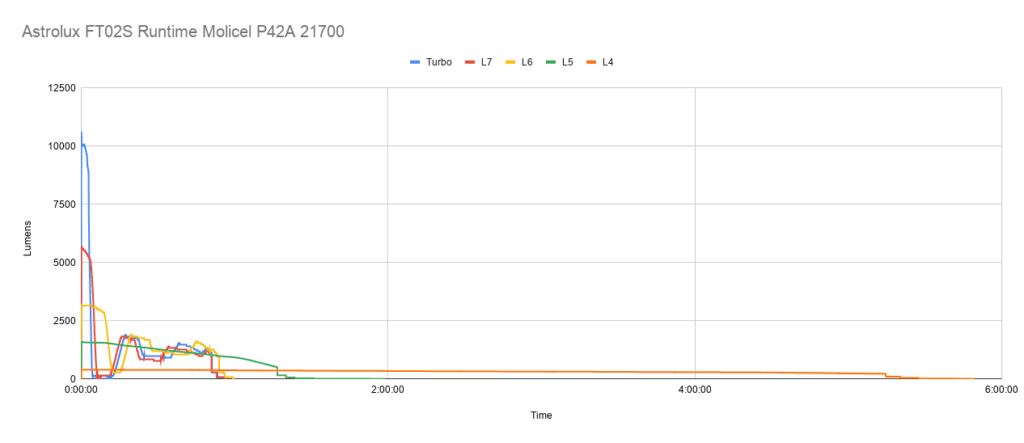
A word of caution: If you max the thermal step down, this thing gets extremely hot, like 2nd degree burns hot. On turbo, the light coming out of the front will melt stuff and burn your skin. You were warned.

Turbo gradually steps down within 60 seconds, but still holds over 9000 Lumens for almost 3 minutes! It’s not until the 4 minute mark that the light is over 80 C (I measured 84 C peak) and has stepped down to under 1000 Lumens. The brightness steps back up around the 15 minute mark as the light cools off, but then steps back down after several minutes when the heat is back up. After 51 minutes, the brightness was way down to under 300 Lumens until the battery voltage dropped the output to basically level 2 at the 56 minute mark where I ended the test.
Level 7 was a mirror image of turbo, albeit with lower output at around 5700 Lumens. Total runtime was nearly identical to Turbo, with the output dropping very low at around the 57 minute mark. I ended the test after a while of running on the low setting.
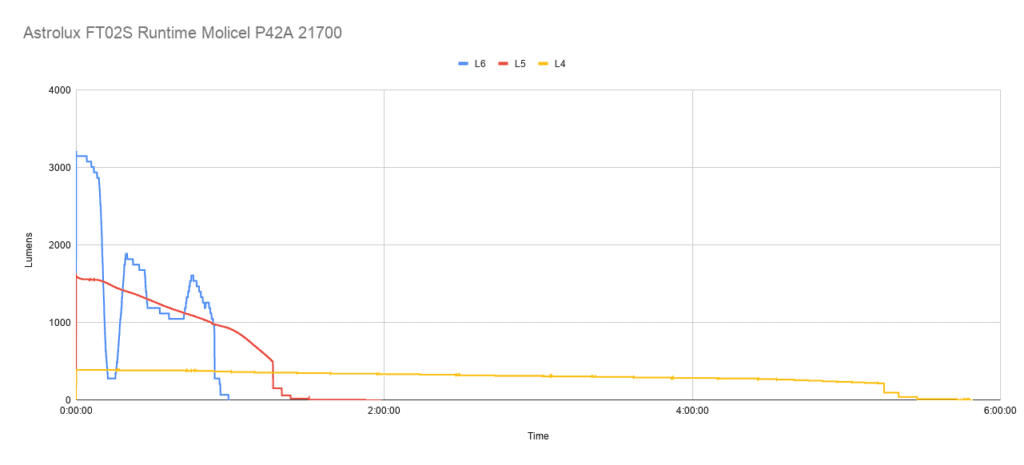
Level 4 started at 392 Lumens, where it sat for about 18 minutes. There was a noticeable step down about every 20 minutes for the duration of the 5 hour 49 minute runtime. Level 5 lasted 1 hr. 52 minutes and level 6 ran for 59 minutes. The two curves were identical in the stepdown profiles, which I expected. Once the battery hits 2.8 volts under load, the light shuts off, which on a low mode can take a very long time. I stopped these tests when the light stepped down to the ultra low brightness.
After all the runtime tests, the light would still work, but only at around level 3 or 4, so even with a low battery you can still have usable light. Another interesting point is the final step downs for each mode are nearly identical and the thermal regulation works pretty well, although the brightness adjustments are pretty noticeable. The Molicel P42A isn’t a high capacity 21700, but still gives good runtimes. If you want the longest runtimes, grab a 5500 or 5900 mAh 26650.
Lumen measurements (for each mode)
Output figures are relative to my 30 cm homemade integrating sphere. Lumen measurements are taken with a Digi-Sense 20250-00 data logging luxmeter calibrated with a light of known output. I used a Samsung 30T for the test. All readings taken at 30 seconds on each stepped mode. Turbo and level 7 dropped fast, no surprise, so I recorded the turn-on and 30 second figure.
| Step | Lumen output |
|---|---|
| 1 | 6.3 Lumens |
| 2 | 36.4 Lumens |
| 3 | 109.9 Lumens |
| 4 | 385 Lumens |
| 5 | 1561 Lumens |
| 6 | 3290 Lumens |
| 7 | 5740 Lumens (6230 at turn on) |
| Turbo | 10,710 Lumens (12,250 at turn on) |
We can see the Astrolux advertised 11,000 lumens is not far off from my figure, and exceeded it at turn on up to 5 seconds. This was after the thermal calibration, though and if I hadn’t calibrated the light, it would have dropped the output within seconds on turbo. The thermal path is good, and it actually did well in sustaining over 8000 lumens for nearly 3 minutes. Level 6 maintained over 3000 Lumens for about 7 minutes. Not bad for a light not much bigger than a C8. There’s no true moonlight mode, but under 7 Lumens is pretty dim.
Throw numbers:
Throw was measured indoors at 5 meters with the fully charged Samsung 30T and the Uni-t UT383S luxmeter. The product listing(s) for the light only advertised a single throw measurement, so I assumed it’s on turbo. I tested the stepped modes in addition to turbo. I took the measurement at turn-on also since turbo steps down so fast.
| Mode step | Measured throw | Advertised throw |
|---|---|---|
| 1 | N/A too low | ? |
| 2 | 150 cd, 24.49 m | ? |
| 3 | 525 cd, 45.82 m | ? |
| 4 | 2175 cd, 93.27 m | ? |
| 5 | 8925 cd, 188.94 m | ? |
| 6 | 20,300 cd, 284.95 m | ? |
| 7 | 35,225 cd, 375.36 m | ? |
| Turbo | 67,300 cd, 518.84 m | 74,600 cd, 546 m |
Beamshots
Astrolux EC03, Astrolux FT02S and Sky Ray King.
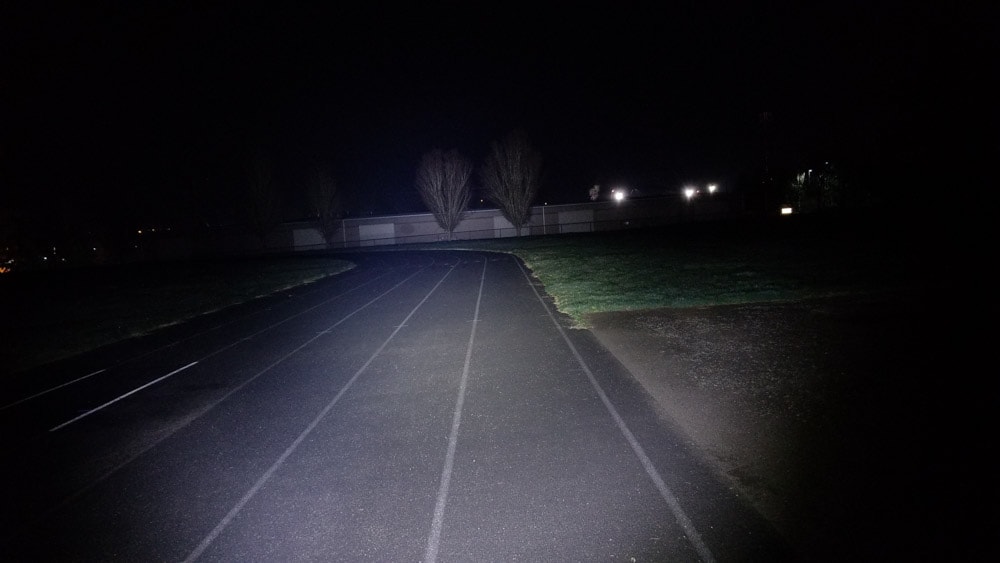
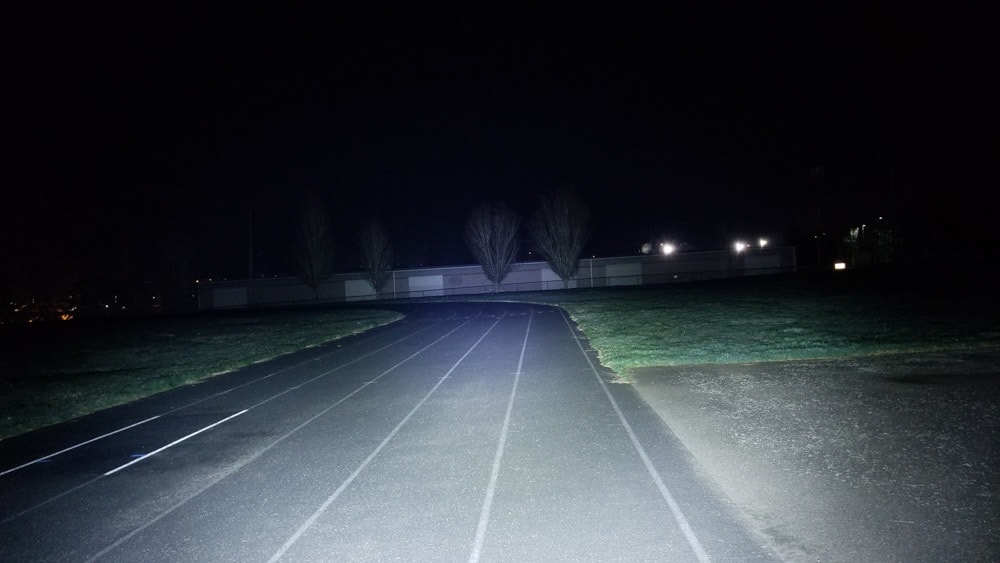
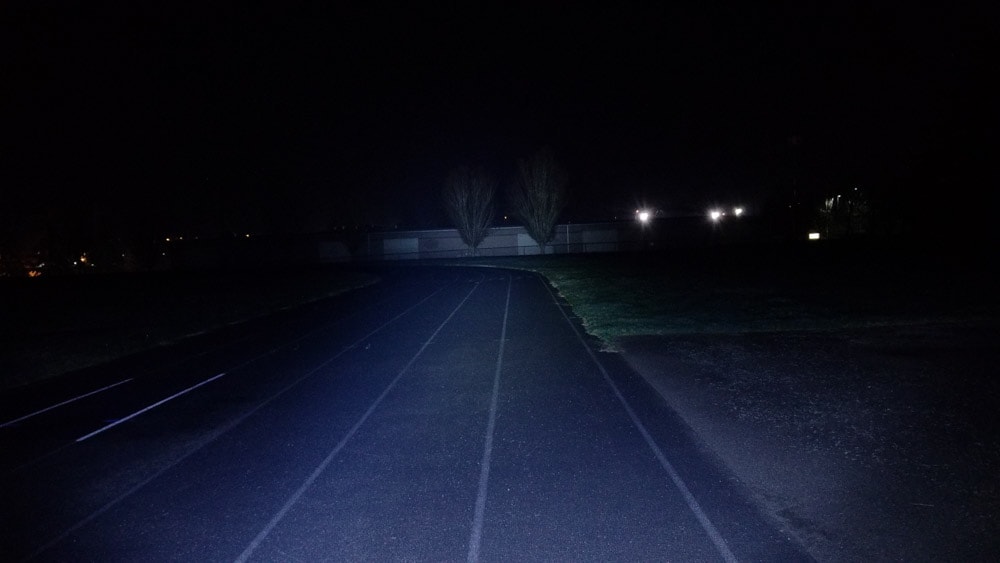
Disclaimer: This flashlight was sent to me for review at no cost by Banggood. I have not been paid to review, nor have I been holding back on problems or defects.
Final Verdict
Pros
- Ridiculously bright for a single cell flashlight
- Decent quality
- Compact and not too heavy
- Sustains high output
- Built in 2 amp charging
- Takes 26650, 20700, 21700, 18650
- Andruil UI
Cons
- Artifact-ridden beam on white walls
- Thermal configuration was way off out of the box
- No USB cable included

4.5 stars: ★★★★⋆
Okay, so I can handily say it was worth the 2 month wait to get this light. I’ve found that this light is more than a darkness killing device. It will keep your hands toasty warm in cold weather, entertain your friends with the neat Andruil blinky modes, or scare away dangerous 4 legged or 2 legged creatures with blinding strobe action. The FT02S does a lot of things right. It’s not huge or heavy, takes just about any 18 to 26 mm diameter li-ion cell (albeit unprotected), and gets crazy bright or pretty dim if you so choose. Is it perfect? No. The beam is interesting and the thermal configuration was way off out of the box. There weren’t any quality issues, and I appreciate that the light is easy to take apart. I am a little sore there wasn’t a USB cable included, but I must digress because this would be a great addition to any collection. I give 4.5 stars to the FT02S.
Buy your Astrolux FT02S here
1lumen selects and reviews products personally. We may earn affiliate commissions through our links, which help support our testing.